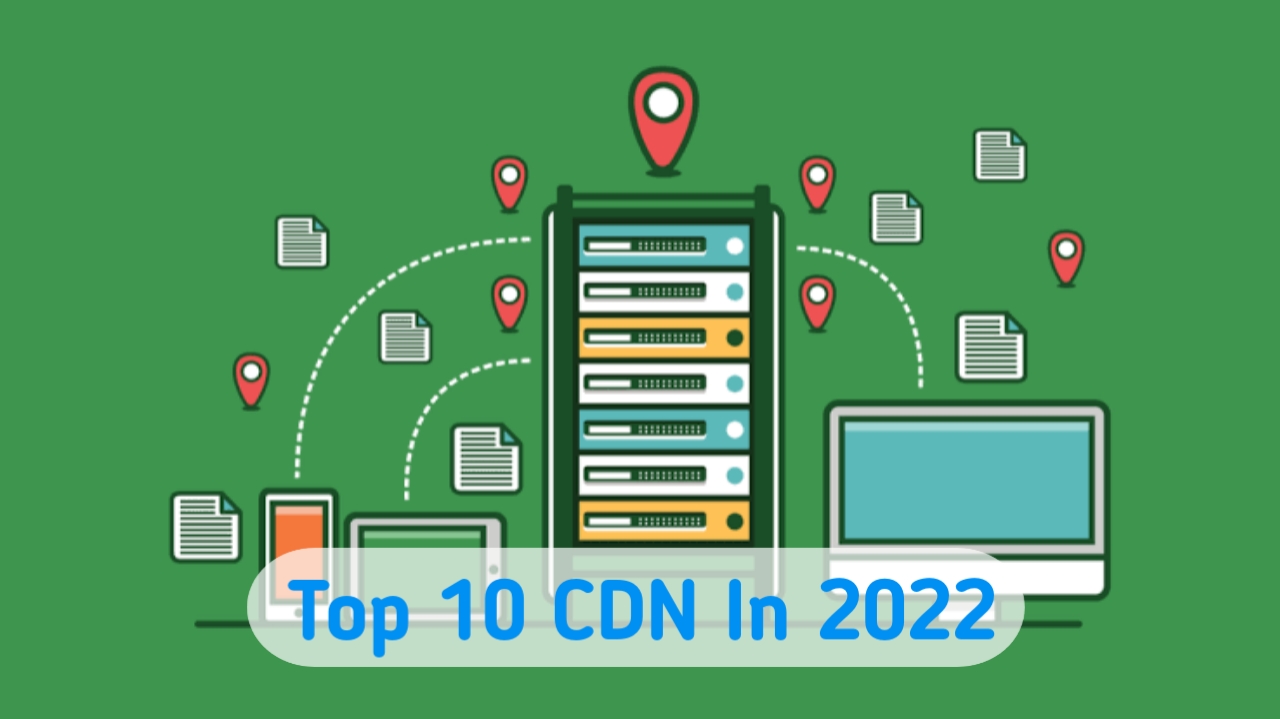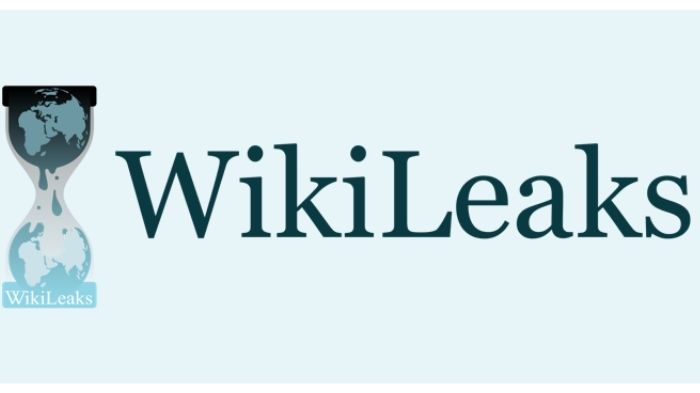
Every website owner wants to improve the speed and performance of their website, and maybe you too. That’s why you are reading this post. There are several ways to do this – you can optimize your website’s images, apply caching plugins, and choose a reliable hosting provider. Or you can use a great Content Delivery Network (Best CDN). This article only tells you about the 10 Best CDN Providers to speed up the website in 2022.
A content delivery network (CDN) works to make almost any website fast loading by caching your files in servers around the world. Whether your visitors come from Europe, North America, Asia, or anywhere else, content is served from the nearest location; no wonder it has become an essential for web hosting and website builder providers.
Because web hosting providers provide servers for only one location, in such a situation, if you buy an India location server, then your site will be fast load only in India. You must take a good content delivery network to improve site speed in other countries or worldwide.
So if you do not know what this CDN is, first you should read this article of ours; what is CDN, and why is it necessary for a website or blog?
Here we will only discuss the best CDN for your website or the best CDN to speed up any website.
10+ Best CDN to Speed up any Website in 2022
By using these Content Delivery Network (CDN), you can speed up dynamic content (HTML pages) along with static content (like images, CSS, videos), etc., of your website or blog.
1. Cloudflare
Cloudflare is a hugely popular American content delivery network service that combines novice-friendly ease of use with expert-level features and functionality. Its setup is simple; you don’t need to edit any code anywhere. All you need to do to use Cloudflare is update your DNS nameservers, and the service automatically starts, caches content, and serves data to visitors from their nearest location. This is also the best free CDN in the world.

Cloudflare is more than just a CDN. It has web filtering features that can block bots, limit content spam, keep you safe from hackers or detect and mitigate DDoS attacks. Its smart image optimizations can reduce the size of the image file by up to 35% and improve the speed. It has extensive support for IPv6, HTTP/2, and SPDY. There are page rules for manipulating website traffic, and its REST API allows developers complete control. Apart from this, Cloudflare also provides the service of Flan Scan, a lightweight network vulnerability scanner.
The Cloudflare free plan allows you to see what this CDN can do without commitment. It’s very useful, offers unlimited bandwidth and no annoying restrictions, and doesn’t force you to upgrade. Upgrading to its Pro plan costs a reasonable $20 (£16) a month, with image optimization rules, extra configurability, and improved support. Whatever you choose, Cloudflare delivers great performance. As we write, you can check out its performance on the benchmarking site CDNPerf.
2. Cloudfront
Amazon CloudFront is the CDN aspect of AWS (Amazon Web Services), so it’s part of the heavyweight operation. And in fact, CloudFront offers a raft of advanced features as you might expect, and you can customize everything like enabling automatic GZip compression for better speeds.

Another strength here is an in-depth analysis on tap, which shows you the details of your visitor’s device type, OS, etc. It also has the handy ability to set alerts, which means you can be warned when data transfer usage goes above a certain level.
The downside is that if you need help, you have to pay for it. Prices vary by region, but the good news is there is a free tier (which gives you 50GB of data per month for a year).
3. KeyCDN
KeyCDN is an easy-to-use budget CDN that can be a good option for first-time users. Getting started on this is simple. Sign up with your email address, and you get 25GB instantly to try; no payment details are required. You get a well-designed web dashboard that is a guide to help you integrate the service with WordPress and other apps.

In addition, KeyCDN fully supports IPv6. More experienced users appreciate alternatives like Origin Shield. You can manipulate headers, cache or strip cookies, or set up a custom robots.txt. Some additional features are also available, such as Block Referrer, which blacklists hotlinking content image processing domains or is great for image optimization.
The standout feature of KeyCDN is its low prices. Bandwidth charges start at $0.04 (£0.032) per GB, which is less than half the price you pay with some high-end competition. The minimum usage is a small $4 (£3.2) per month, and the minimum payout is $49 (£38). The company doesn’t even try to capitalize on extras, for example, by offering free Shared SSL and custom Let’s Encrypt SSL certificates.
4. Fastly
Some big brands like Spotify and Reddit use Fastly CDN because it lives up to its name, delivering impressively fast performance levels. According to the rough guidelines of CDNPerf’s ranking, it is the second fastest CDN for the UK, and speeds are mostly good worldwide.

However, Fastly’s the strongest point is how configurable the service is. For example, there’s diverse support for different types of video caching and tons of low-level controls for those who want to manipulate the HTTP header to customize the way content is served. For convenience, you can log in to multiple Fastly customer accounts with a single set of credentials.
Of course, some know-how is required to set everything up, and a novice in the CDN world will undoubtedly be confused by all the options on offer. But it’s invaluable for those who need this level of flexibility and configuration. Regarding pricing, Fastly operates a pay-as-you-go model with a minimum fee of $50 (£37) per month. Plus, you can test traffic for up to $50 for free.
Of course, some know-how is required to set everything up, and a novice in the CDN world will undoubtedly be confused by all the options on offer. But it’s invaluable for those who need this level of flexibility and configuration. Regarding pricing, Fastly operates a pay-as-you-go model with a minimum fee of $50 (£37) per month. Plus, you can test traffic for up to $50 for free.
5. StackPath
Stackpath was formerly known as MaxCDN. This CDN provider primarily focuses on the West, with 14 Points of Presence (PoPs) in North America (USA) and nine in Europe. In total, Stackpath has over 50 PoPs around the world in over 35 locations, including South America.

StackPath is user-friendly, comes with a simple web console to manage your settings, and if you get stuck, extremely efficient technical support is available via live chat or phone call. The performance in the US, the UK, and Europe, looks good, but going forward, you can see things a little off like it’s SLOW in India.
This CDN gives users free shared SSL (or the option to use your SSL certificate if you prefer). It also has anti-DDoS technology, a capable Web Application Firewall, and EdgeRules. This powerful tool lets you customize the behavior of StackPath’s CDN at different stages of a CDN request. Overall, it’s an attractive offering with a basic plan that charges $10 (£7.9) per month for up to 1TB of bandwidth. At least that was the case. Currently, you’ll have to contact sales for more details.
6. Akamai
Akamai is one of the oldest and most popular providers, it provides the best CDN service, and according to the company, they serve up to 30% of all internet traffic. Being one of the oldest providers, their server coverage is impressive, with around 275,000 servers in over 135 countries. Akamai also provides 24/7 customer support that who can expect of someone in this business for a long time?

It can be a bit problematic to set up for newbies, though. That doesn’t mean newbies can’t do it or that they’ll have a lot of trouble; it’s just that the whole service is more geared toward advanced users, generally speaking.
Akamai has a good number of features, and the performance among the best is quite impressive. For example, at the time of writing, benchmarking site CDNperf ranked Akamai among the eight fastest services worldwide. Big brands, news sites, or websites with a lot of traffic worldwide use this. But it is difficult for small business owners as the pricing is a bit tricky; you have to pay at least $2000 per month to use it.
7. Google Cloud CDN
Google Cloud CDN provides over 90 edge server locations around the world. The biggest advantage of Google Cloud CDN is that it comes with a free SSL certificate for your website, and since it is a Google service, you can trust it. But we can’t say anything like that.

It supports static and dynamic content and large files, meaning they are suitable for video, audio, and image-heavy websites. HTTP/2 and HTTP/1 protocols are also fully supported. This is the cheapest CDN that works on pay-as-you-go.
As for its pricing, it offers a free trial credit of $300 for 90 days. Pricing is based on bandwidth usage and HTTP/HTTPS requests. Prices range from $0.02-$0.20 per GB (depending on destination).
8. Microsoft Azure CDN
As you undoubtedly know, Microsoft Azure is a big old stack of integrated cloud tools for building and managing applications and services, with a wide range of coverage, including a CDN offering that we are naturally focused on. Huh. Note that this does not use Microsoft’s Edge servers but three plans that use other CDN networks: Standard Akamai, Standard Verizon, and Premium Verizon.

We discuss these various plans in more detail in our review of Microsoft’s CDN service but suffice it to say that it can be somewhat confusing to work with in terms of pricing. This is not the cheapest offering around. Still, those seeking integration with other Microsoft technologies and services may find it worth the payment.
In this, you get a web dashboard that is completely packed with features, though, as always, it’s not particularly easy to use for beginners (and the setup process is also very involved). The level of performance is good, and CDNPerf generally ranks it high. If you’re using other Azure services, or if you’re a developer who would appreciate the likes of .NET or PowerShell management features, this should be an attractive prospect. You can create a free account and get started with 12 months of free services.
9. Leaseweb
If you need a powerful CDN, Leaseweb is best for you, suitable for an enterprise-level operation and regular business users. Whether you want a multi-CDN or a private CDN, you’ll need to contact LeaseWeb for exact pricing, though don’t expect it to be cheap.

It offers you all the same security and CDN features like heavyweight enterprise plans, even with a ‘basic’ subscription. This includes its smartly designed console, which comes with a wide raft of possible settings and tweaks, including many options you don’t get with your average service (like the ability to set the cache-control header or how long to cache 404 pages).
There’s also an in-depth Statistics section that displays graphs and charts showing several interesting stats, such as visitor and traffic breakdown, cache performance, and top file types that are seeing action. Although it is difficult to predict what results in you will get in practice. Users who want a powerful range of features in their CDN can pay a 30-day trial to find out.
10. CDN77
CDN77 is a big-name player in the content delivery network game, with some heavyweight clients signed up, including the European Space Agency. It has an extensive CDN network with more than 35 data centers worldwide, many of which are in Europe and the Americas. Still, it also has server locations in South America, Asia, and Australia. If you want, you can also use its small partner, such as BunnyCDN.

Its web console interface is very streamlined and keeps jargon to a minimum, making it user-friendly for beginners in the CDN world. The flip side of this is that there aren’t many options, although you can make some changes to the various settings.
In terms of performance, the CDN77 is pretty solid and ranks as a lower- to mid-pack player. You get a free Let’s Encrypt SSL certificate, and the CDN is great value for money overall in terms of 77 per-GB pricing, though it’s not the cheapest outfit we’ve highlighted here. Pricing for US and European locations starts at $0.033 per GB of data, with Asia and Latin America being more expensive. If you want to test the waters, there’s a 14-day risk-free trial, and you don’t need to provide any payment details.
conclusion,
There is no shortage of CDN providers for your website. While all will help you speed up your website, some of the best CDN providers offer unique features that set them apart. That is why we have included only those content delivery networks (Best CDN to speed up any website) here, which make your site fast loading.
Ultimately, the best CDN available will be the one that best meets you and your website’s needs. Rest must know that the speed up of the website is the ranking factor of Google.







